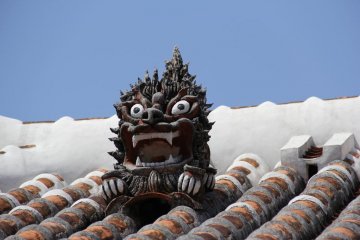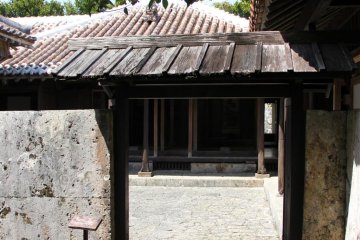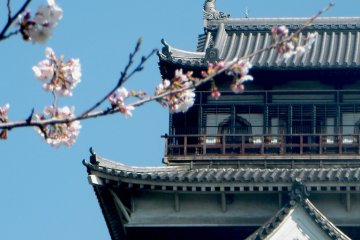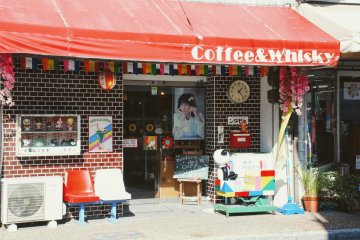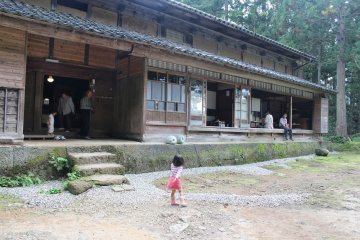Situated high on a hillside in central Okinawa, an early 18th century home endures as a historic landmark of the Ryukyu Kingdom, a present day Major Cultural Asset designated by the national government of Japan, and an interesting addition to any traveler's itinerary. The Nakamura House also represents the downfall and return to prominence of a family tied to the whims of Shuri Royalty.
The family patriarch Gashi was a mentor of Lord Gosamaru of Zakimi Castle in Yomitan during the 16th century. Gashi followed when the Shuri King ordered a move to Nakagusuku Castle, only to fall into disfavor when Gosamaru died in a politically charged spat with the Shuri King and a rival lord. The Nakamura House was built in the 1720s when the Nakamura family, descendants of Gashi, returned to prominence in agricultural commerce and by royal appointment as a local Jitoshoku or village leader.
The Nakamura House is representative of the stature and extravagance permitted for a rich farmer and Shuri appointee. As seen today it is a walled and fenced-in compound of four structures, a well, and agricultural pens on nearly 1,600 square meters. The structure was built in the style of mainland Japanese homes of the Kamakura and Muromachi periods. Original thatched roofs gave way to distinctive Okinawan red tiles as the family’s social status improved. The stone entrance is configured to keep evil spirits away; a shisa dog on the tiled roof of the main home serves as a talisman to further deter evil spirits.
Inside the compound a central courtyard abuts the main home, a two -room annex, and an agricultural product storage locker as well as stone paved walkways to a barn, pig pens and water well. The central structures are ringed by an elevated garden of ornamental grasses, native trees and shrubs. The Omoya main house has eight rooms plus a dining room and entrance room. An Ichibanza guest room, Nibanza alter room, and Sanbanza living room all have tatami floors and are beautifully decorated. An Ashagi side annex served as living quarters for sons that had not yet married. The Takakura high storage area was designed to keep farm products above vermin and free from moisture. The Kachiku was a barn used to keep domesticated goats, cows and horses as well as for tool storage. A Huru pig sty adjoining the barn ensured fresh meat at all times for the household or for market.
The easiest way to drive to the property is to take the Okinawa Expressway to exit 5 then turn right at Route 29, turn right onto Route 81, turn right again onto Route 146, and make one final right turn onto the property by following the signs posted along the roadway. Bus 30 from Naha Terminal will stop near the intersection of Routes 329 and 146 from which a 30 minute walk will complete the journey. Admission of 500 yen can be purchased at the small gift shop and snack stand just outside of the Nakamura House stone gate; tickets for teenagers 12-18 are 300 yen, and children under 12 are 200 yen each. Bring a camera or video camera to capture your visit. Open: daily 9:00~17:30 except for Japanese holidays.




